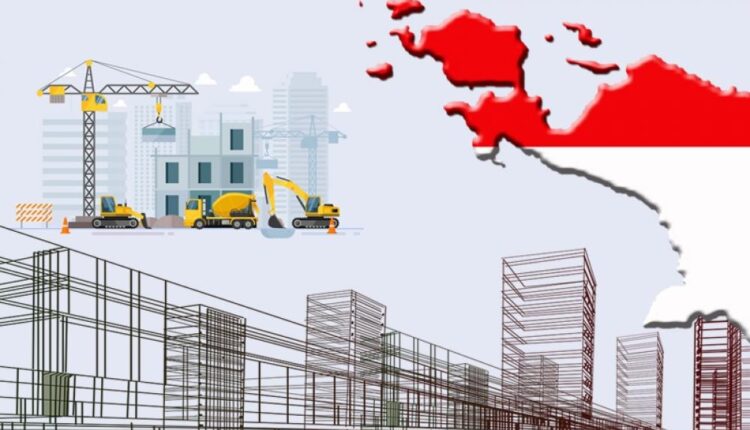People Are Waiting for Special Autonomy for Papua Volume II
By: Sabby Kosay) *
The government has given a signal to extend Papua’s Special Autonomy. The community also supports the sustainability of Special Autonomy for Papua Volume II because it has proven to be able to bring prosperity to the people.
If we refer to law 21/2001 regarding the special autonomy (otsus) of Papua, the autonomy funds will only be given for 20 years and will end in the next 2021.
This has provoked a question mark, considering that there are still development problems in Papua, even though through Otsus the government has poured trillions of rupiah for the provinces of Papua and West Papua.
These two provinces are still listed as regions with high poverty rates and low HDI when compared to other provinces. In fact, the Papua region is also experiencing economic growth conditions of minus 15.72 percent in 2019.
This kind of situation can certainly be an irony if it is related to the amount of the special autonomy fund allocation and the authority held by regional governments in the governance of regional development.
The central government has decided that the Papua Special Autonomy, especially the distribution of special autonomy funds, will be continued through the submission of a revision of the Papua Special Autonomy Law which is now included in the DPR Prolegnas for the 2019-2024 period. Through this revision, it is hoped that various problems stemming from the weakness of the special autonomy regulation and its derivative regulations can be corrected so that Otsus can provide the maximum benefit for the Papuan people and the various deviations that have occurred previously can be avoided.
So far, the Papua Special Autonomy Law has provided large regulatory powers for regions to carry out regional development through perdasi and perdasus. This is not without problems, because this derivative regulation of the Special Autonomy Law is in a local political situation which is often unstable and often elitist.
As an asymmetric autonomy policy, the Papua Autonomy Law places the provincial government at the center of the implementation of Papuan autonomy. This is different from the autonomy that is practiced in other regions where districts / cities are the basis for implementing autonomy so that the distance between the government process and the aspirations of the community is not too gaping. So, it is only natural that the realization of the Papua Special Autonomy has not had a maximum impact on society.
Therefore, the momentum of the revision of the Papua Special Autonomy Law should be a means to revitalize the implementation of the Papua Special Autonomy so that it has a direct impact on the welfare of the people of Papua and West Papua. A number of strategic issues should be pushed into discourse in discussions to revise the Papua Special Autonomy Law.
Among others :
First, the relationship between central and local governments. The Papua Special Autonomy Law needs to give greater authority to districts / cities in Papua and West Papua to be involved in the aspects of planning, implementation and evaluation of regional development through the allocation of special autonomy funds. In addition, the central government also needs to make derivative regulations for the Special Autonomy Law to make it more operational in relation to the governance of the special autonomy fund.
Second, the transformation of the political affirmation policy so that it is not only based on ethnicity, which has been known as the concept of affirmation for indigenous Papuans (OAP), has become an affirmation of the interests of the Papuan people. Ethnicity as the basis of affirmation must be transformed into a broader affirmation concept, especially those concerning the interests of the basic rights of the multicultural Papuan people to access health, education and welfare.
Third, there needs to be a regional financial management system that is more accountable and transparent in accordance with the principles of good governance in the governance of the special autonomy fund. This needs to learn from the experience of participatory, transparent and accountable village fund governance. So far, Papua’s special autonomy funds have often been the “bancakan” of the local Papuan elite and have not flowed into priority development allocations for the Papuan people. Therefore, the weaknesses in regional financial governance stemming from the Papua Special Autonomy need to be adopted in the revision of the Papua Special Autonomy Volume II.
Fourth, the revision of the Papua Special Autonomy Region needs to determine priorities and measurable targets and time limitations for the implementation of the Special Autonomy Region. This is important as a common ground to measure the extent to which the policies implemented are appropriate and achieve targets. Whereas the absence of measurable indicators means that the Papua Special Autonomy allocation does not have targets that can be assessed qualitatively and quantitatively.
The revision of Special Autonomy for Papua Volume II is indeed necessary for the easternmost region of Indonesia, because development in Papua is absolutely necessary for the sake of equitable development so that Papua has a competitive edge with other regions.
) * The author is a Papuan student living in Yogyakarta
